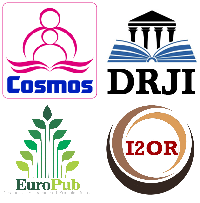Behavioral AI Nexus: A Cognitive-Emotional Framework for Adaptive and Human-Centric Organizations
Abstract
By combining behavioral analytics, neuroscience-inspired AI, and real-time interaction models, the Behavioral AI Nexus (BAN) transforms organizational intelligence by mapping, forecasting, and influencing team dynamics. This state-of-the-art module functions as an AI-powered managerial psychologist, monitoring emotional states, predicting behavioral changes, and coordinating team actions with organizational objectives and culture. BAN enables executives to take action on disengagement, enhance collaboration, and cultivate a vibrant, high-performance culture by converting communication habits and work practices into actionable insights. With the increasing complexity of today's workplaces, BAN provides a game-changing solution that fosters psychological safety, increases emotional intelligence at volume, and boosts productivity through behavioral improvement.
References
Gaurav, R., Singh, A., & Sharma, P. (2020). Adaptive task allocation in human-machine teams with trust models. ResearchGate. https://www.researchgate.net/publication/347629197
Gündüz, S., Yıldırım, E., & Kaya, M. (2022). AI-based prediction of burnout using multimodal behavioral data. Frontiers in Public Health, 10, 1–10. https://pmc.ncbi.nlm.nih.gov/articles/PMC9120306/
Hofstede, M., & Minkov, T. (2020). Cultural mapping and organizational alignment. Journal of International Business Studies, 51(2), 195–212. https://www.sciencedirect.com/science/article/abs/pii/S0148296320305191
Huang, S., Zhang, J., Wang, L., Liu, Y., & Chen, X. (2024). Emotion recognition using deep learning techniques: A review. Applied Sciences, 14(15). https://www.mdpi.com/2076-3417/14/15/6631
Kim, Y., Lee, H., Park, J., & Choi, S. (2022). Aspect-based emotion analysis on speech for predicting performance in collaborative learning. ResearchGate. https://www.researchgate.net/publication/355424756
Kumar, A., & van der Aalst, W. M. P. (2012). Dynamic work distribution in workflow systems. Data & Knowledge Engineering, 72(1), 1–18. https://www.researchgate.net/publication/220591295
Wang, L., Zhao, Q., & Sun, H. (2023). Human-centered AI for personalized workload management. ResearchGate. https://www.researchgate.net/publication/383764838
Copyright (c) 2025 Shrikarnag Bangalore Prahallada, Ranjitha Sridhar Rao Nag, Lohith Dayananda Ram, Shrivatsa Bangalore Prahallada, Deepashree Abhaya, Rudri Jani

This work is licensed under a Creative Commons Attribution 4.0 International License.


 ISSN
ISSN 











